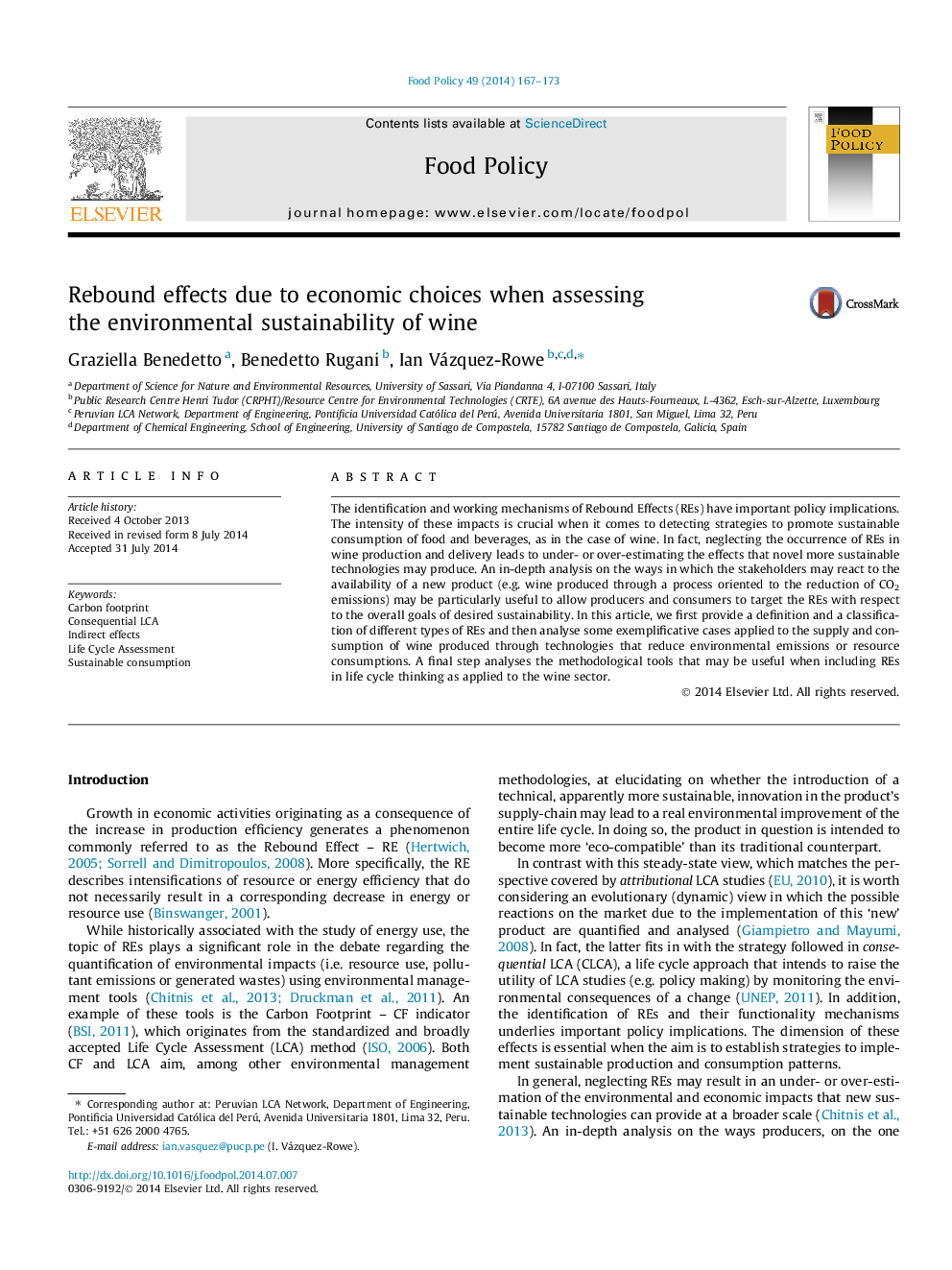| Article ID | Journal | Published Year | Pages | File Type |
|---|---|---|---|---|
| 5070450 | Food Policy | 2014 | 7 Pages |
Abstract
The identification and working mechanisms of Rebound Effects (REs) have important policy implications. The intensity of these impacts is crucial when it comes to detecting strategies to promote sustainable consumption of food and beverages, as in the case of wine. In fact, neglecting the occurrence of REs in wine production and delivery leads to under- or over-estimating the effects that novel more sustainable technologies may produce. An in-depth analysis on the ways in which the stakeholders may react to the availability of a new product (e.g. wine produced through a process oriented to the reduction of CO2 emissions) may be particularly useful to allow producers and consumers to target the REs with respect to the overall goals of desired sustainability. In this article, we first provide a definition and a classification of different types of REs and then analyse some exemplificative cases applied to the supply and consumption of wine produced through technologies that reduce environmental emissions or resource consumptions. A final step analyses the methodological tools that may be useful when including REs in life cycle thinking as applied to the wine sector.
Keywords
Related Topics
Life Sciences
Agricultural and Biological Sciences
Food Science
Authors
Graziella Benedetto, Benedetto Rugani, Ian Vázquez-Rowe,
